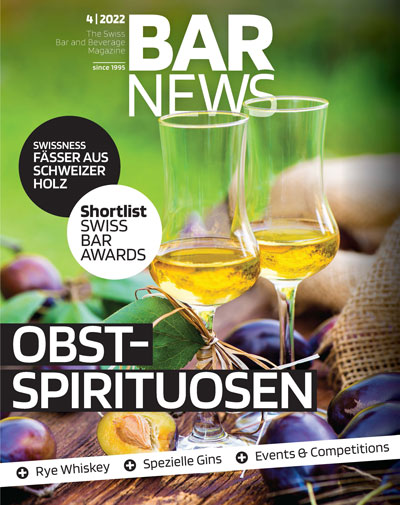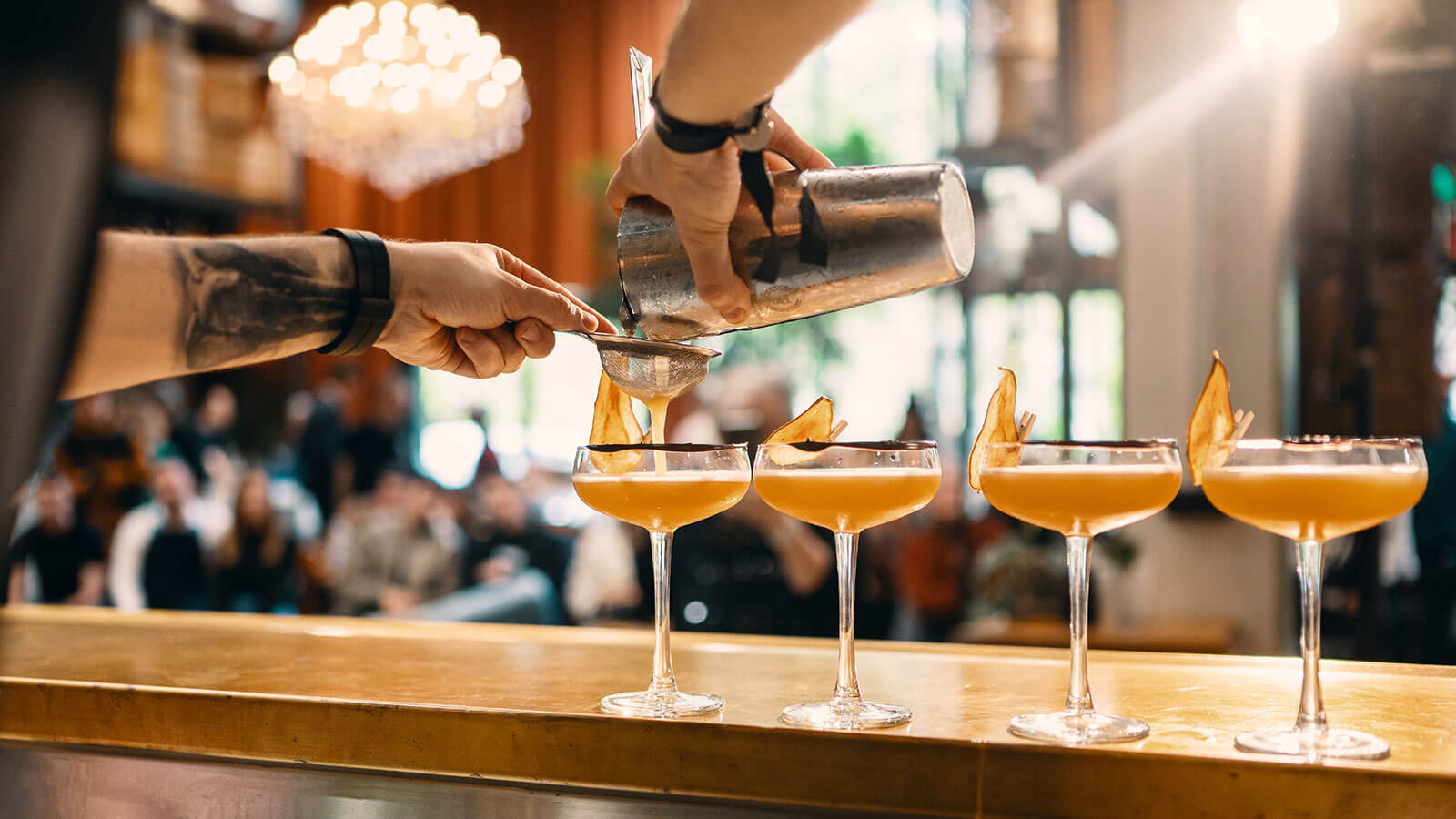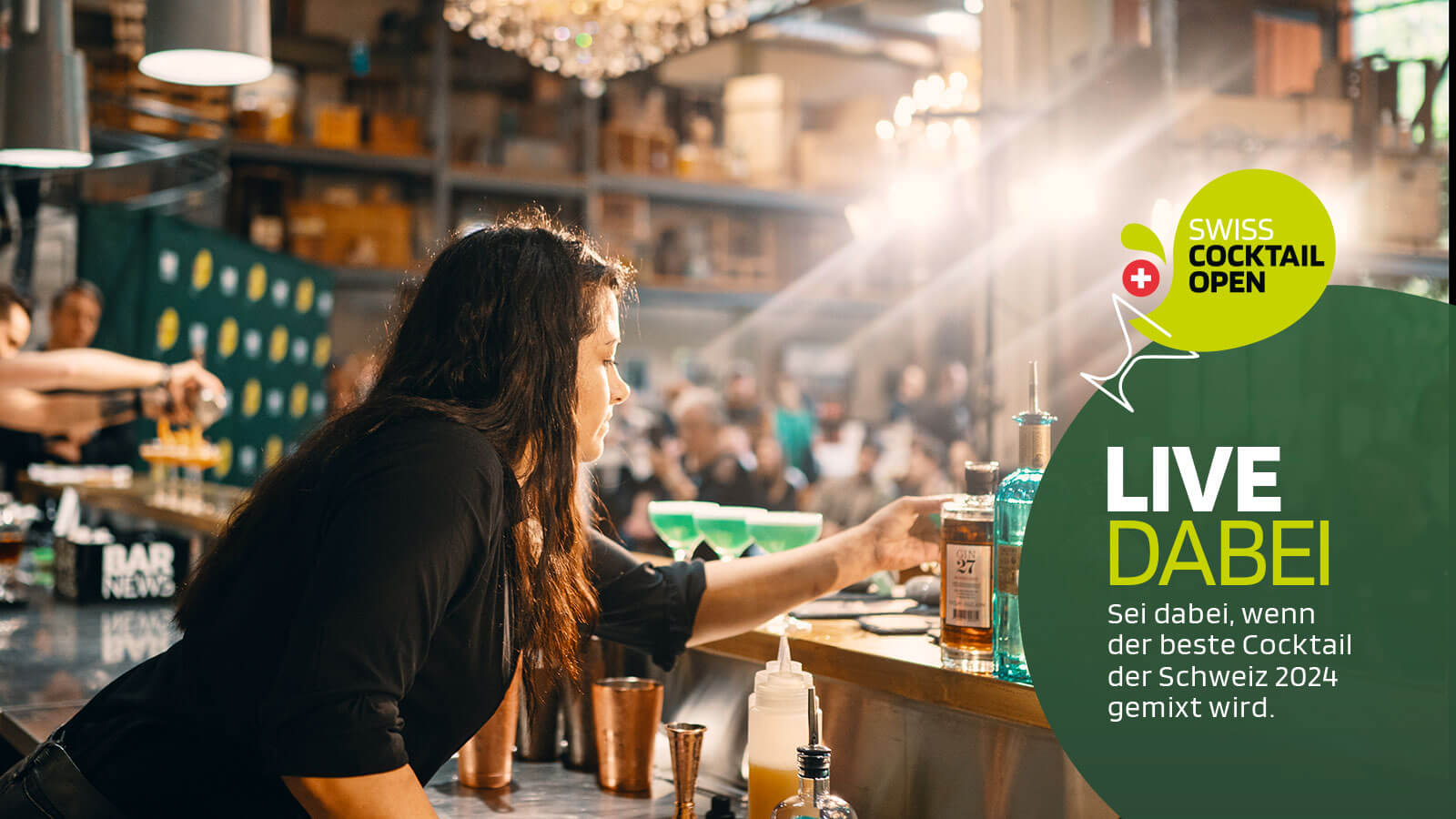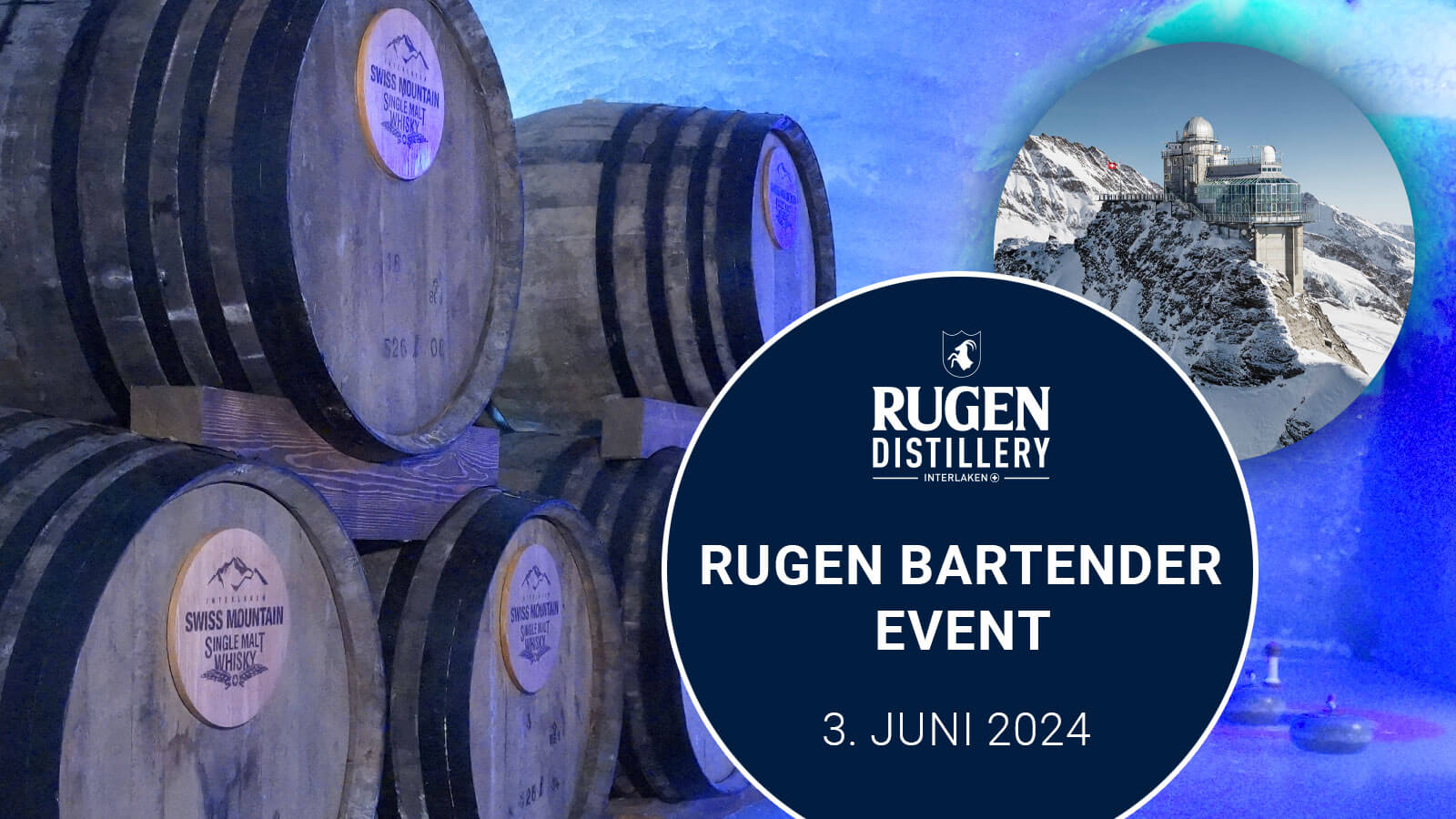Have you heard of this gin?" It's a question asked oh so often, by guests, girlfriends, bartenders, brand ambassadors and supervisors, and there's usually only one answer: "No." Of course not. How could I? There is now a variety of gins that would require several years of study to master. And once you've done that, you could start all over again, because the gin market is on the move. Still. Hardly a day goes by without a new gin being launched.
If a few years ago every city seemed to "need its own gin, nowadays you rather get the feeling that every neighborhood, every village, every mountain top as well as every accountant, dentist and graphic designer - yes, mostly men - needs its own gin.
A lot has happened in Switzerland in particular. The amount of gin produced has skyrocketed in recent years. In 2018, when the first people were already talking about a slowdown in the gin wave, 403 hectoliters of gin (converted into pure alcohol) were produced, but last year the figure was already 1,472 - a growth by a factor of 3.6.
In addition, gin imports have been rising for years and only stagnated for the first time last year. Year after year, Switzerland's gin imports are approaching those for vodka - the second largest position after whiskey (excluding liqueurs and aperitifs).
Production Swiss Gin
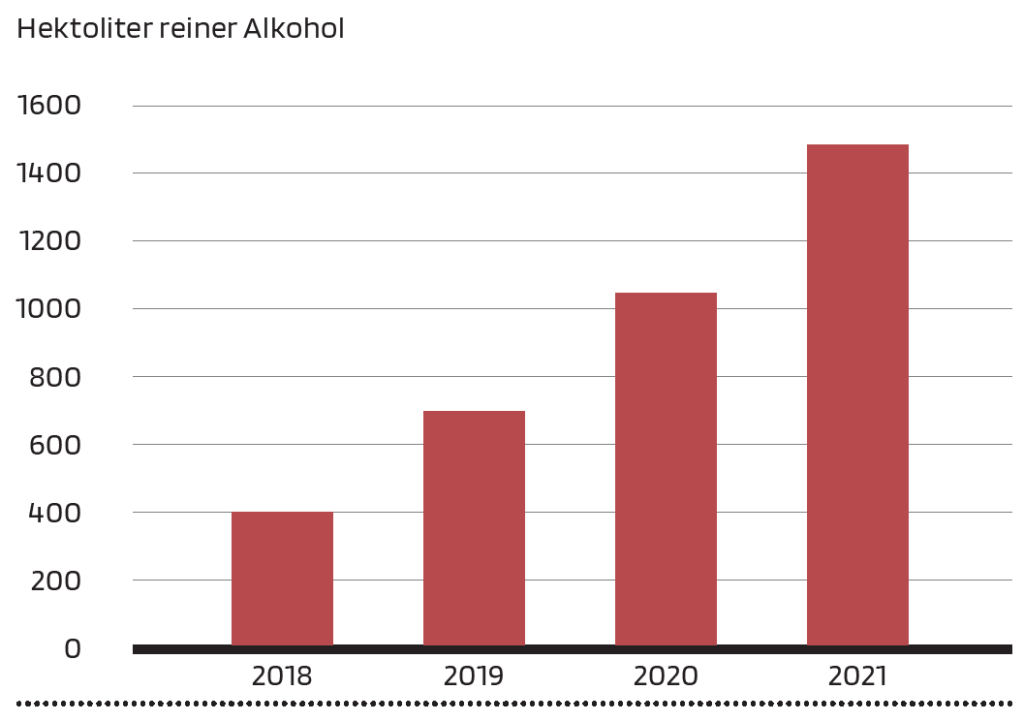
Anyone who wants to see the gin boom for themselves need only go to the nearest supermarket, wholesaler or liquor store. Gins from large and small brands stand in rows and try to attract the buyer's attention with appealing bottle and label designs.
The last few years in particular have underscored the need for an emergency supply of the juniper spirit in the comfort of one's own home. However, the legitimate question arises as to whether the stylish bottles are actually taken off the shelf every now and then, or whether they primarily cater to the collector's instinct or the interior design aspirations of the owner.
Gin goes viral
But what does the situation actually look like in the bar? Because the fact is that hardly anyone breaks out in enthusiasm today who stocks a Hendrick's or a Bombay Sapphire alongside the standard Gordon's, as was the case fifteen years ago. Just like a good rum or whisk(e)y range, a good gin range also needs to be curated in a bar.
And yet, it's easier with other spirits categories. In rum, one looks for a balance of the lightly elegant Spanish style, some high-ester bombs from Jamaica, Barbados or Guyana, and something fresh and green from the French Antilles, in addition to clear and barrel-aged distillates. A few rarities from Japan, Thailand, Mauritius and Switzerland add appealing accents as desired.
In the case of whisk(e)y, too, the first step can be to look at the provenances in order to put together a diverse range. But with gin? That's a little more difficult.
Gin has been produced outside the United Kingdom before - the origins of the juniper spirit go back not least to Dutch genever - but the heart of global gin production remained on the British Isles for a long time.
But terroir plays a subordinate role in gin compared to other spirits. Neutral alcohol and dried botanicals cannot be compared with grapes or fresh sugar cane juice. So it's hardly surprising that some world-class brands operate distilleries on other continents for their gin brands in addition to their home distilleries on the British Isles.
In the case of gin, then, yesterday as today, the focus is often on the brand, not the distillery. But in Switzerland in particular, a lot has happened in this area in the last decade. Basel, Bern, Zurich, Geneva, St. Gallen, Biel, Aarau, Winterthur - the cities where no hip distillery has opened its doors in recent years are almost in the minority.
In addition, there are new distilleries in rural areas, which, like urban distilleries, rarely want to miss out on business with one of the easiest spirits to produce. For since gin, even if not exactly the raison d'etre, is almost certainly the first product, gin brand and distillery brand not infrequently go hand in hand.
The situation is somewhat different for the traditional fruit brandy distilleries, which for their part are now jumping on the gin bandwagon or have long since done so. Most of them have opted for glass bottles, which make a different statement than the tall, narrow and delicate bottle shape predestined for complex fruit brandies. In the branding, the distillery is in the background; the spotlight is on the newly created gin brand.
Useful and not so useful gin categories
Should you now build and arrange your gin range by origin? This can make perfect sense, especially if the gin menu is very large. The 4 Tiere Bar in Zurich, for example, consistently arranges its gins by country, both on the menu and on the bottle shelf (somehow you have to be able to keep track of 650 gins).
In some places, however, a classification based more on taste might make more sense. Because there are of course gins whose botanicals have a connection to the local flora. And yet it is impossible to draw conclusions about the origin of a gin solely from its taste. A categorization of gins should help the guest to make an informed decision. The latter may have expanded his gin knowledge in the last decade at fairs, festivals or workshops.
But the listing of brand names, sorted by country, can only be used by someone who has already drunk the gin in question. More helpful is an additional subdivision by style and the listing of the most important botanicals. The familiar categories such as Dry, Old Tom, Flavoured or Sloe can serve as the style, or the primary note: Citrus, herbal/tart, floral, fruity or spicy.
However, terms such as Distilled Gin, Compound Gin - or even worse: New Western Style Gin - contribute more to confusion. A logically structured and informative bar map should help to make one's own gin range visible.
But without trained staff who have an "elevator pitch" on call for the majority of gins - i.e. one or two sentences with information on aroma, origin or history - nothing works.
If a gin comes to a bar...
But who actually decides on the gin offer? Is it the bar owner, the Barkeeper, the bar manager - or the brand ambassador? Is it just about the quality of the liquid or do aspects such as bottle design, storytelling, or price play a role in the decision-making process?
Gin may still be on trend, but new gins no longer sell themselves. Several bars have recently, if not reduced, at least stopped expanding their gin range. Every bottle that sits on the bottle rack for decorative purposes means tied-up capital. Fortunately, spirits do not lose value, which may well be an advantage in the face of rising inflation.
Every bottle that stands on the bottle rack for decorative purposes means tied-up capital.
The explosion of gin variety means that the competition has gotten bigger. For most bars, adding the local start-up distillery's gin to the lineup has been a point of honor. But as a bar, do you really want to pour a city's ten or more gins - which are sometimes rather well-intentioned, and not well-made? Especially when you could also expand the mezcal range for the same price.
Let's go into the aspects that still convince gin fans today.
Exceptional gins
Since the willingness to pay for gin has increased massively over the last two decades, some producers are hardly sparing any effort in the procurement of high-quality botanicals. For example, several gins advertise that the herbs, barks, roots, seeds and zests used for them are organically grown.
However, for a gin to be sold as an organic gin with the Knopse label, the ethanol used for it must also be certified accordingly and produced without synthetic pesticides. Alcosuisse even has a Demeter-certified ethanol on offer. So it's only a matter of time before the first gin distilled exclusively at full moon is marketed.
But back to the botanicals. Even if these were not collected by the producer himself and are correspondingly rare and expensive, they can, depending on the ingredient, weigh mightily in the pricing. Rare or at least less common citrus fruits such as yuzu, Buddha's hand, calamansi or premium lemons from the Amalfi Coast are certainly interesting in a gin, but cost accordingly.
But not all exceptional gin ingredients are expensive. One example is Lumière des Alpes' Muh-Gin, which is made with milk. Various types of pepper, seaweed, teas, salt, and fruits such as apricots, berries, peaches, and mangoes - ingredients that will be found in gins in 2022 - also determine the character of a gin without driving up its price.
It is not uncommon for the most exclusive ingredients to find their way into the juniper spirit only after distillation. Thus, Old Tom Gins are no longer sweetened only with sugar, but also with honey or maple syrup. It is actually a wonder that there is not yet an Old Tom Gin that is sweetened with Vin Cuit, Birnel or Latwerge.
In many cases, the maceration that follows distillation is to change the color of the gin. Butterfly Pea Flower, saffron, spruce needles, roibos tea, fruit or glitter are used for this purpose. Gins that have been allowed to mature in barrels for a few months are also given a color change.
Colorful gins in particular are currently very popular, and there's no denying that more thought often goes into developing a new sales and communications strategy than into the new recipe.
An appealing bottle and label design can be expected from a certain price, but aspects such as sustainability - as well as usability and container sizes, especially for the catering industry - should be given greater weight.
Glass-to-mouth propaganda
But who makes the purchasing decision and who ultimately consumes the new hip gin? Many gin producers like to give more weight to the off-trade. But if you leave out the restaurant trade altogether, you lose out on an important multiplier.
Because who, if not the bar professional of the local cocktail bar or the hip scene pub, influences with his recommendations what Mr. and Mrs. Swiss will drink today in the bar and buy tomorrow in the retail trade for themselves at home or as a souvenir for friends and acquaintances.
Ultimately, however, it is the guest who decides whether to go along with the recommendation. And sometimes it is the guest who asks the Barkeeper : "Do you already know this gin?" And then, a few days later, the corresponding bottle is already on the bottle shelf as "Gin of the Week.


